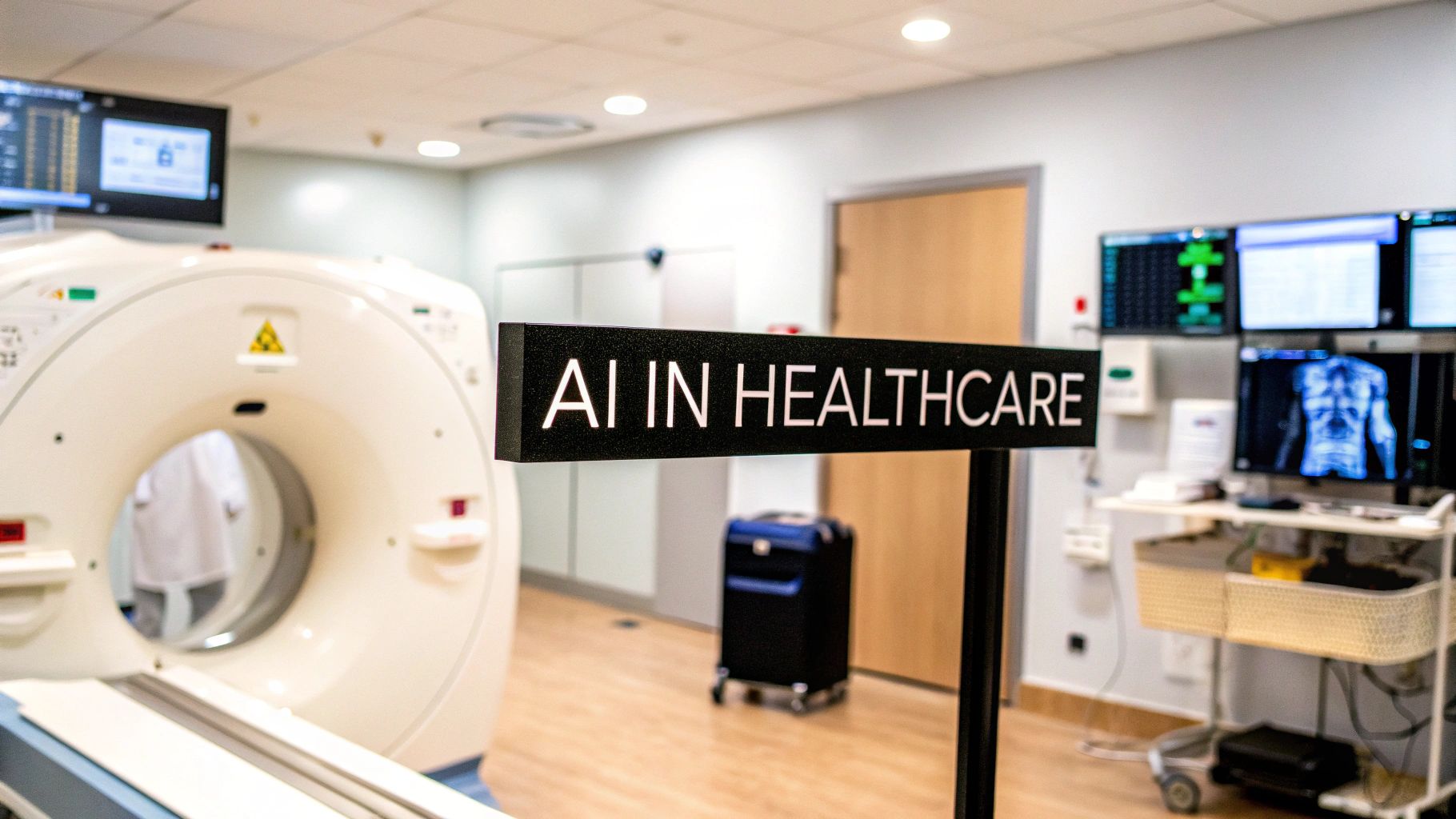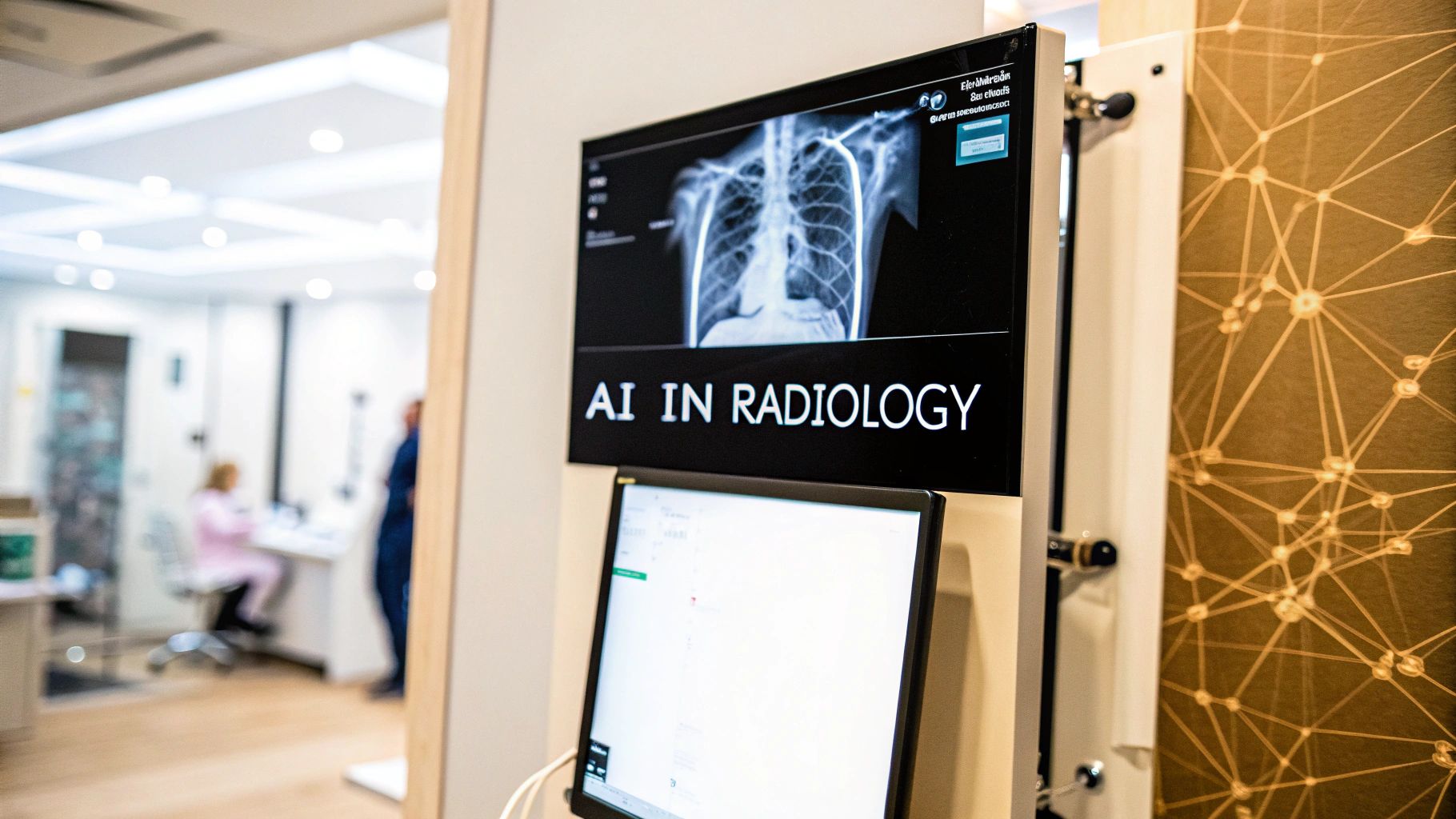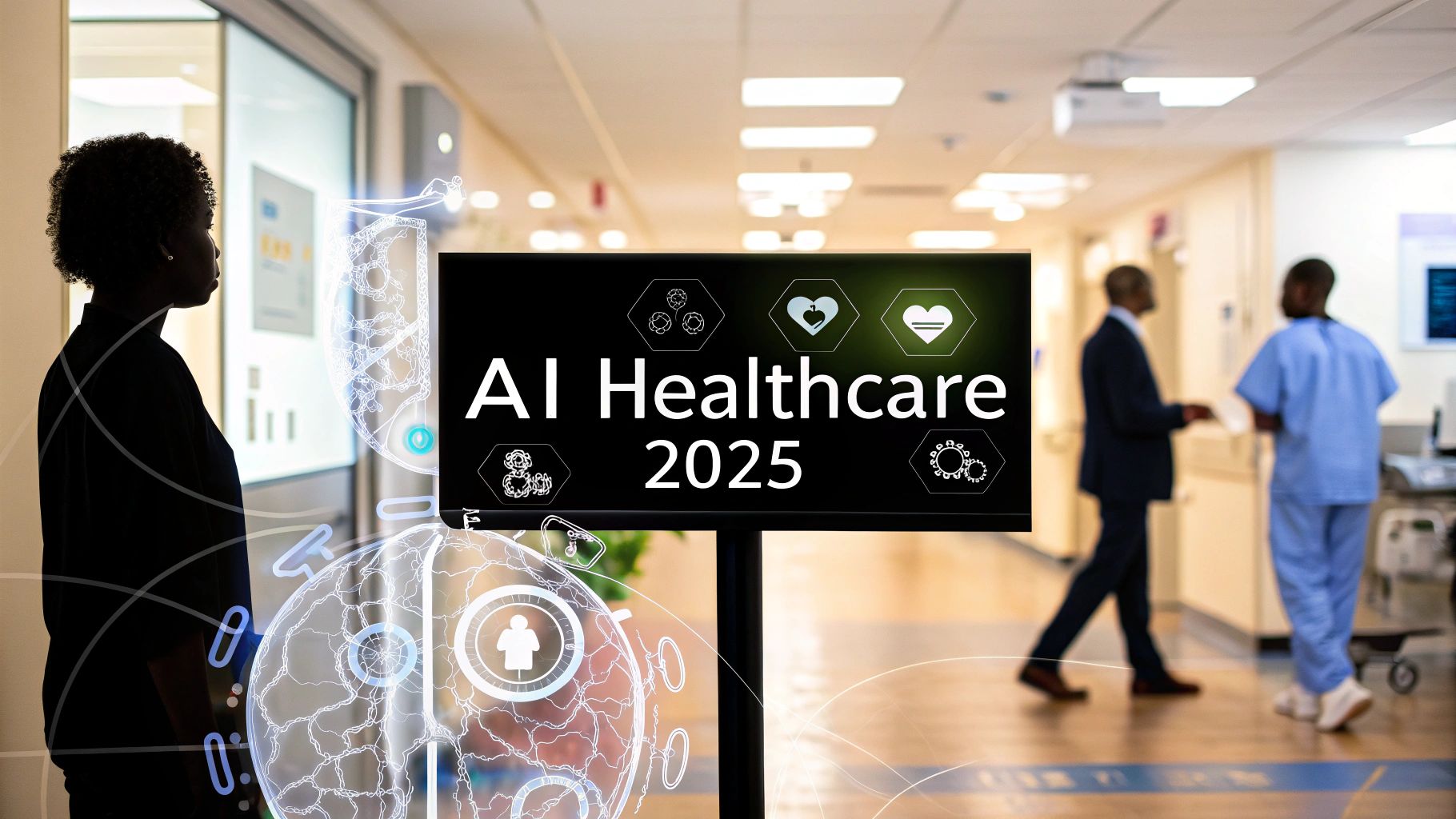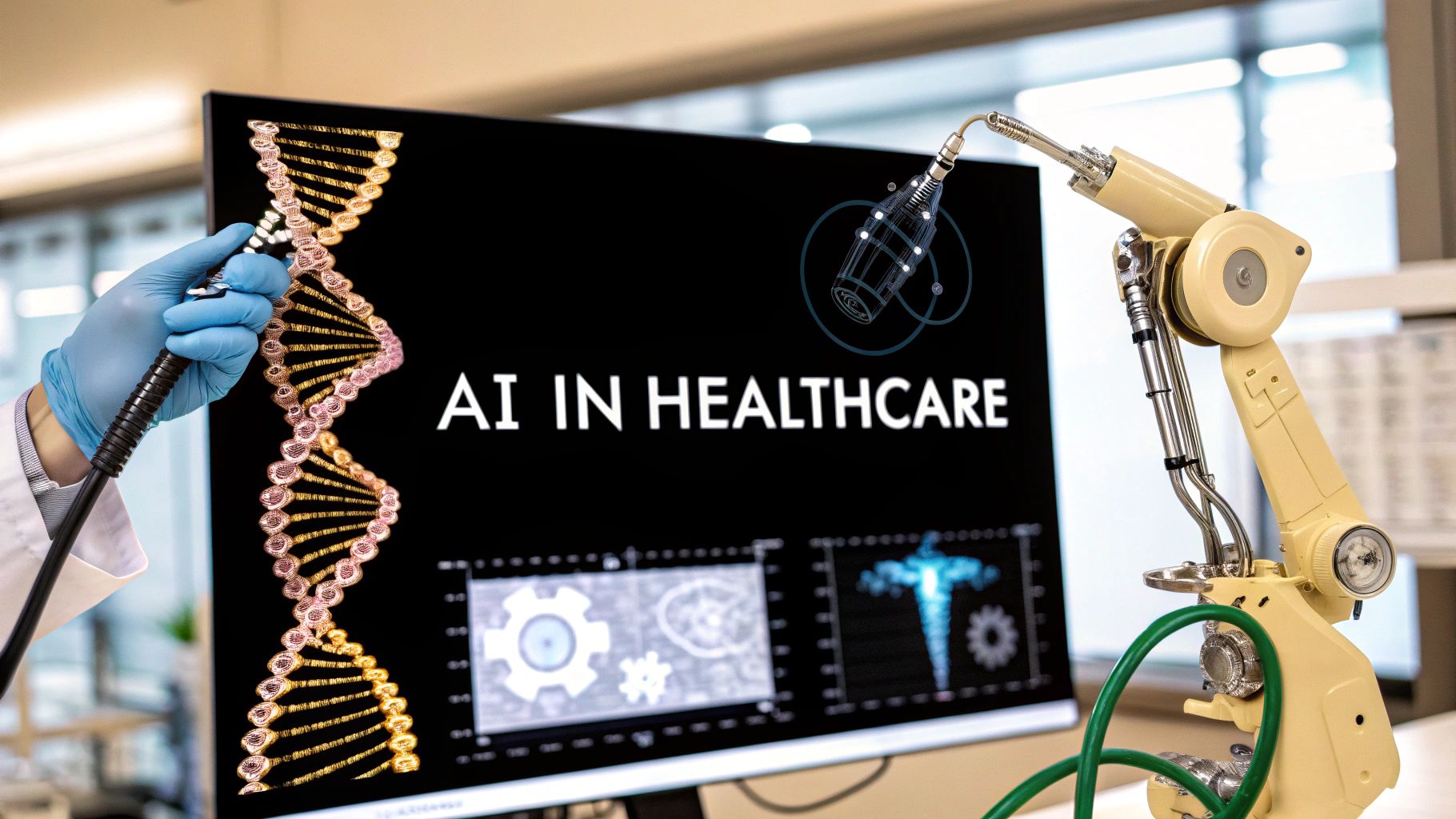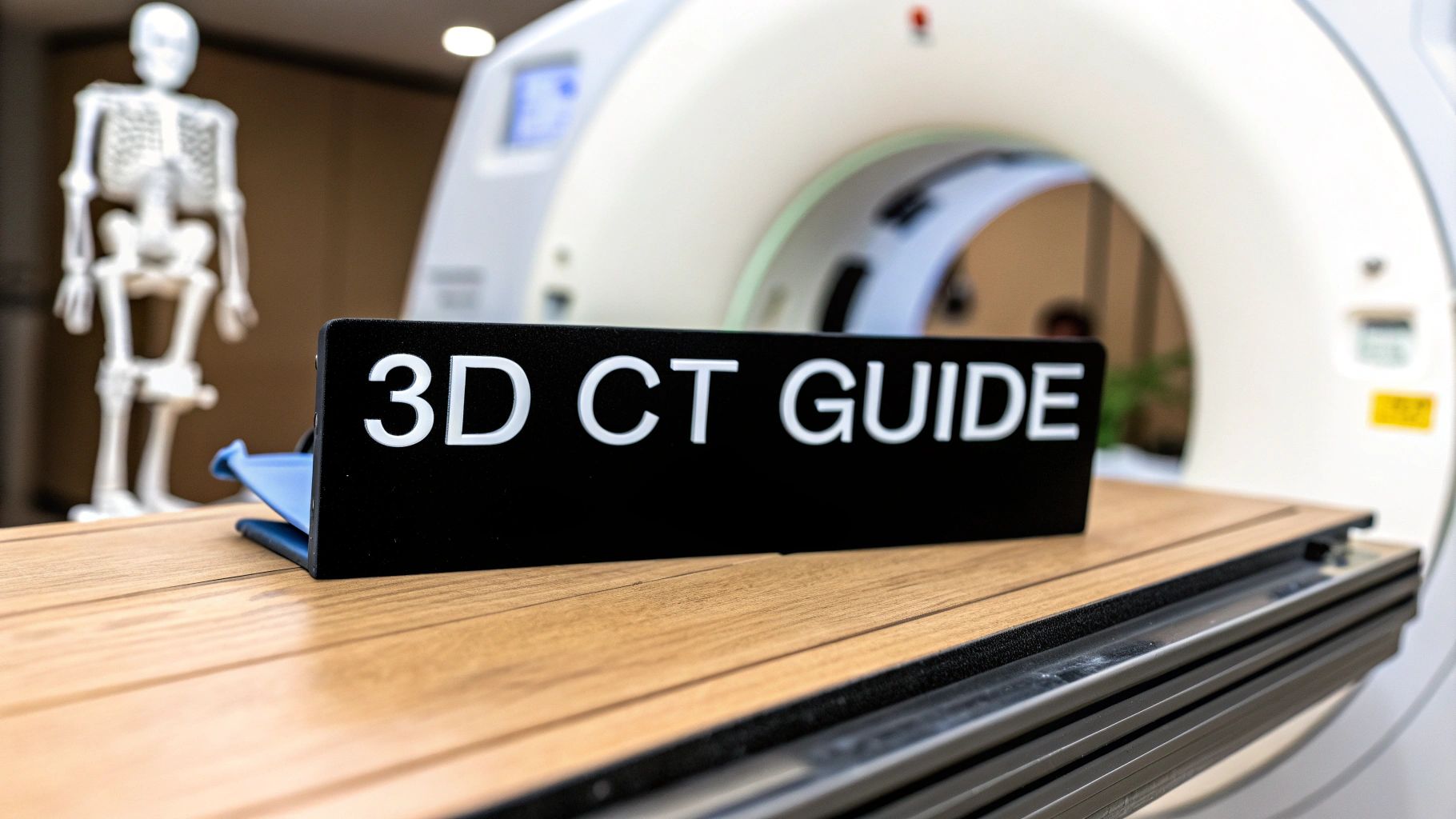The Medical Device Development Process: From Concept to Market
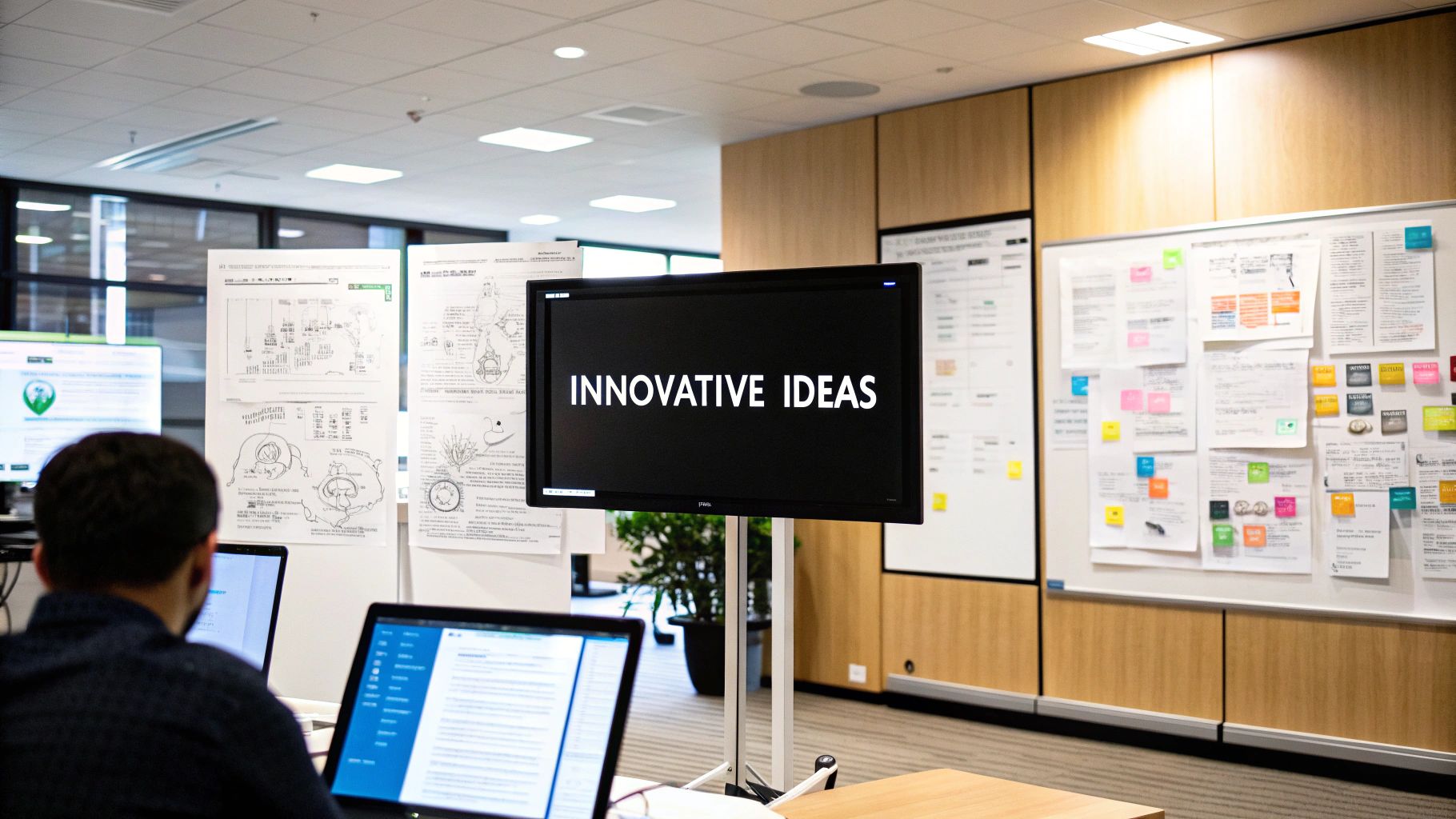
Developing a medical device is a complex journey. It requires meticulous attention to detail and strict adherence to regulations. The process transforms an initial concept into a market-ready product designed to improve patient care. This journey is known as the medical device development process, a carefully structured lifecycle.
The process typically follows a multi-phase approach. This ensures the final product is safe, effective, and meets all regulatory requirements. It involves continuous feedback, adaptation, and collaboration between various teams. This structured approach minimizes risks and increases the likelihood of success.
Phase 0: Clinical Needs Analysis
The process begins with identifying an unmet clinical need and conducting preliminary market research. This initial stage, known as Phase 0 or clinical needs analysis, lays the foundation for the entire project. It helps assess the market opportunity and aligns the project with the company's strategic goals.
Phase 1: Building the Business Plan
Phase 1 focuses on developing a robust business plan. This involves financial reviews, competitive assessments, and a preliminary review of intellectual property and regulatory pathways. This stage ensures the project's financial viability and defines the intellectual property strategy. It also initiates the navigation of the regulatory landscape.
Phase 2: Design, Prototype, and Testing
Phase 2 transitions from planning to action. A cross-functional team designs, prototypes, and tests the device's feasibility. Regulatory and reimbursement strategies are further refined. This phase focuses on creating a tangible product and ensuring its practical application in a clinical setting.
Phase 3: Verification and Validation
In Phase 3, the device undergoes rigorous verification and validation testing. This ensures it meets predefined specifications, performs as intended, and complies with relevant safety and quality standards. Regulatory activities continue throughout this phase. This stage confirms the device's functionality and safety.
Discover more insights about medical device development
Phase 4: Final Design and Pre-Launch
Phase 4 centers on finalizing the design and preparing for product launch. This includes securing necessary regulatory approvals, such as FDA clearance in the United States. This phase is crucial for ensuring the device is ready for commercialization.
Phase 5: Product Launch and Post-Market Surveillance
Finally, Phase 5 encompasses the product launch and post-market surveillance. The device is distributed, and ongoing monitoring collects data on its real-world performance, safety, and effectiveness. This phase ensures continuous improvement and allows manufacturers to address any post-launch issues. This iterative process is vital for the device's long-term success. Each phase plays a crucial role, ensuring a smooth transition from concept to market.
Transforming Clinical Needs Into Viable Device Concepts
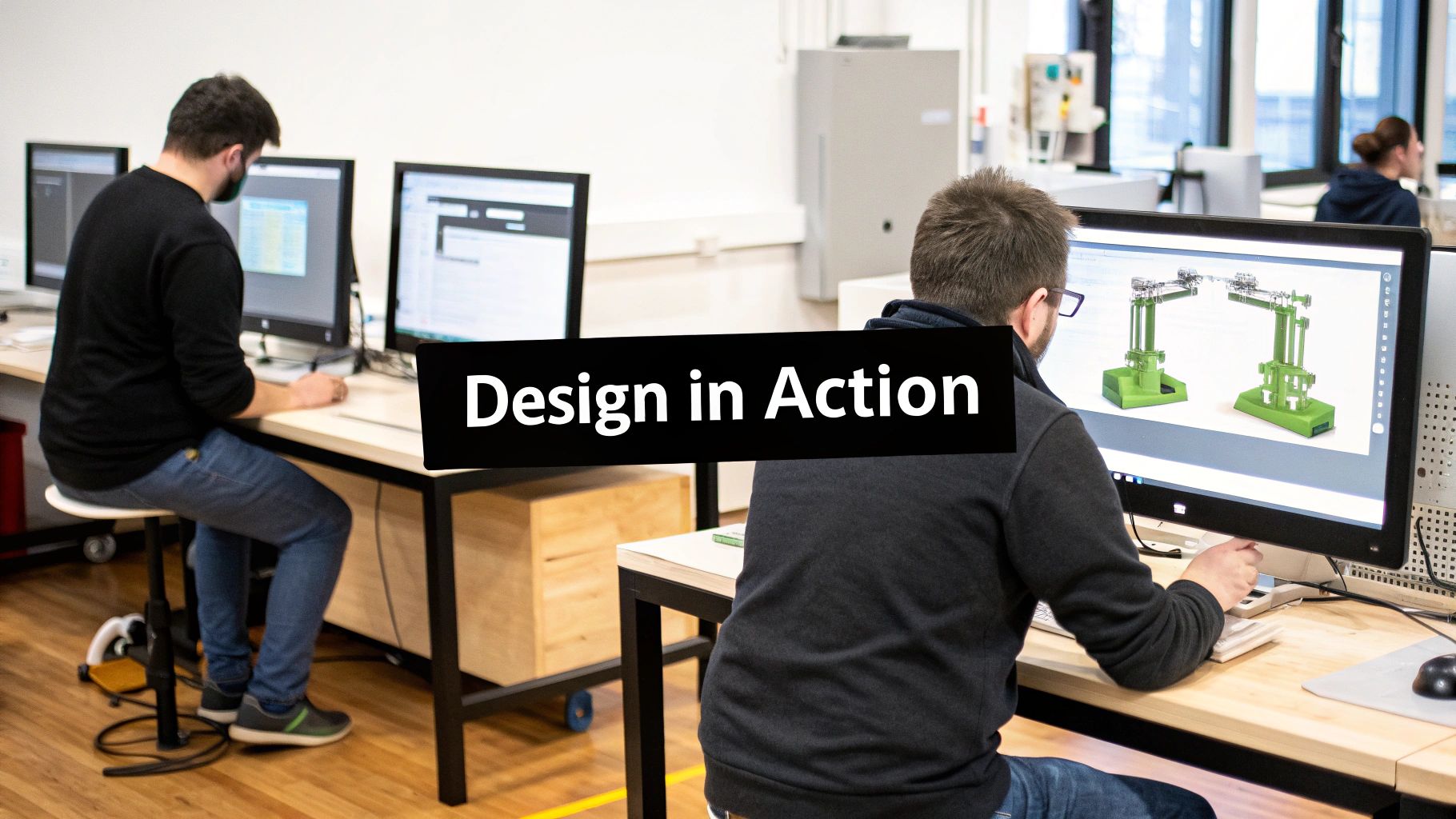
The early stages of medical device development are crucial. These initial steps determine whether a product will meet a real unmet clinical need, or simply address a perceived market gap. This section explores how successful companies differentiate these two critical aspects and examines practical strategies for transforming validated clinical needs into commercially viable device concepts.
Identifying Genuine Unmet Needs
Many medical device projects fail because they try to solve problems that don't truly exist or affect enough people. Successful companies meticulously research and validate clinical needs before significant investment. This involves engaging with key stakeholders: clinicians, patients, and payers, to understand their perspectives.
For example, a company developing a new diabetes management device might interview patients. This helps understand the challenges with current treatments and identify areas for improvement. This ensures the device addresses real needs, increasing the likelihood of adoption.
Validating Concepts With Stakeholders
Concept validation is critical. It involves gathering feedback on initial device concepts to refine design and functionality. Successful companies go beyond superficial feedback, using structured frameworks for deep insights. This might involve questionnaires, focus groups, or simulated use studies.
Protecting intellectual property during this collaborative phase is also important. Safeguarding valuable ideas without hindering open communication and innovation is key. This balance protects the company's investment while encouraging valuable stakeholder input.
Early-Stage Prototyping
Early-stage prototyping minimizes costs and maximizes learning. These initial prototypes don't need to be perfect; they're proof-of-concept models to test key functions and gather feedback. This iterative process helps identify potential design flaws or usability issues early, reducing costly revisions later.
This focuses resources on refining a device's most promising aspects. A well-executed prototyping phase informs subsequent development stages, creating a smoother transition to a market-ready product.
To understand the initial phases in more detail, take a look at the table below:
Introduction to the table: The following table outlines the key activities, primary goals, and essential outputs for the early development phases of a medical device. This information is crucial for planning and executing a successful development strategy.
| Development Phase | Key Activities | Primary Goals | Essential Outputs |
|---|---|---|---|
| Needs Identification | Market research, stakeholder interviews (clinicians, patients, payers), literature review | Understand unmet clinical needs, identify target patient population, define the problem | Clearly defined unmet need, target product profile |
| Concept Validation | Develop initial device concepts, gather feedback from stakeholders (focus groups, surveys, simulated use studies) | Refine device concepts, assess feasibility and user acceptance, identify potential risks | Refined device concept, user feedback reports, risk assessment |
| Early-Stage Prototyping | Develop basic proof-of-concept prototypes, test key functionalities, gather user feedback | Demonstrate technical feasibility, identify design flaws and usability issues, refine design | Functional prototypes, test results, design specifications |
Conclusion of the table: As shown in the table, each phase builds upon the previous one, ensuring a structured and informed development process. The outputs from each stage serve as crucial inputs for subsequent activities, contributing to the overall success of the medical device.
Balancing Technical Feasibility and Commercial Viability
Developing a successful medical device requires balancing technical feasibility and commercial viability. Cross-functional teams, including engineers, clinicians, and marketing professionals, must collaborate. This ensures the final product is technically sound and commercially appealing.
This requires understanding the target market, the competitive landscape, and regulatory requirements. A device might be technically brilliant but fail if it's too expensive to manufacture or addresses a small market need. A holistic approach, considering technical and commercial aspects, is crucial for success.
Navigating the Regulatory Maze in Device Development
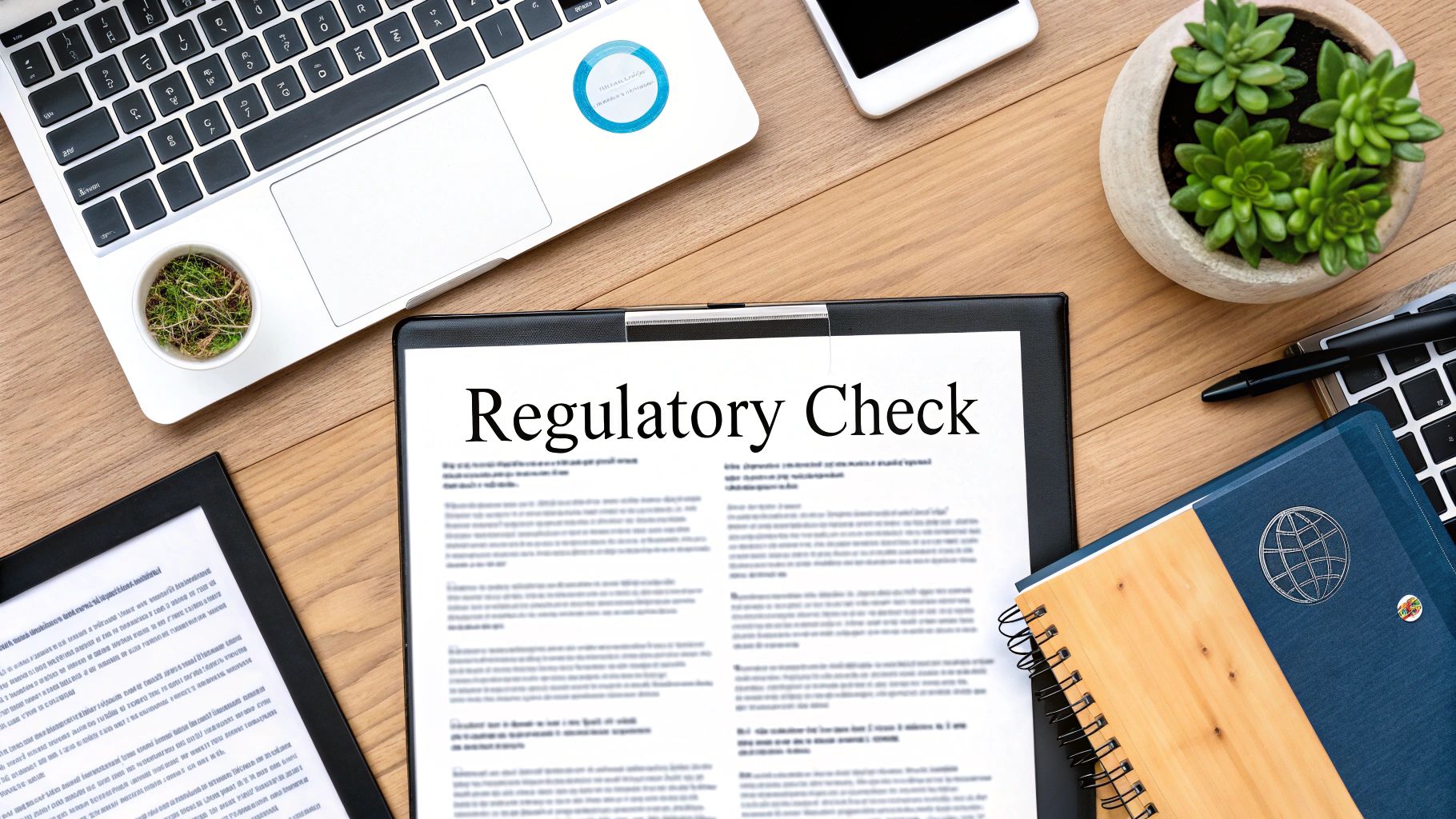
Regulatory strategy for medical devices isn't just a box to check; it's a core component of the development process. In fact, a well-defined regulatory strategy can be a substantial competitive advantage. This section explores how proactive regulatory planning, implemented from the very beginning of the conceptual stage, can significantly reduce time to market. Truly understanding the regulatory landscape can make all the difference between a successful product launch and costly, frustrating delays.
Understanding Device Classification
A crucial first step is understanding device classification. This categorization, based on the potential risk a device poses to patients, determines the necessary regulatory pathway, the required testing, and the overall development timelines.
For example, a Class III device like a pacemaker faces a much more stringent approval process than a Class I device like a bandage. This is simply because the potential consequences of a pacemaker malfunction are far more serious.
The classification process itself significantly impacts development timelines and costs. Higher classifications often mean more extensive clinical trials, stricter quality control requirements, and more scrutiny from regulatory bodies. Navigating this process effectively requires in-depth knowledge of the specific regulations in your target markets.
To help illustrate these differences, let's take a look at the following table. It compares medical device classifications across key markets and highlights how these classifications can influence the development process.
Medical Device Regulatory Classification Comparison
| Risk Classification | FDA (US) | MDR (EU) | PMDA (Japan) | Development Implications |
|---|---|---|---|---|
| Low Risk | Class I | Class I | Class I | Minimal regulatory requirements, focus on general controls, faster time to market |
| Moderate Risk | Class II | Class IIa/IIb | Class II | More stringent regulatory requirements, including special controls or clinical data, longer development timelines |
| High Risk | Class III | Class III | Class III/IV | Extensive regulatory requirements, including premarket approval (PMA) or clinical trials, significant development investment |
As you can see, the level of risk directly correlates with the complexity and duration of the development process. Understanding these differences is paramount to successful product development.
Early Interactions with Regulatory Bodies
Early and productive communication with regulatory bodies like the FDA in the US, or notified bodies in the EU is invaluable. Pre-submission meetings allow developers to clarify regulatory requirements, discuss potential testing strategies, and proactively address any concerns before formal submission.
This proactive approach can prevent costly rework later and help streamline the overall approval timeline. These early interactions provide critical feedback on device design, clinical trial design, and data requirements.
This feedback can help developers refine their strategy and significantly increase the chances of a successful first-time submission. Ultimately, this proactive communication saves time and resources, leading to a much more efficient development process.
Avoiding Common Submission Pitfalls
Many medical device submissions are delayed due to common, avoidable pitfalls. Incomplete documentation, insufficient testing data, and a lack of clarity regarding the device's intended use are frequent issues.
These oversights can lead to prolonged communication with regulators, significantly delaying market entry. Meticulous attention to detail and thorough preparation are therefore essential for a successful submission.
For example, clearly defining the device's intended use and the target patient population is vital. This clarity helps regulators understand the device's purpose and accurately assess its safety and effectiveness. Likewise, providing comprehensive testing data that meets established standards is critical to showcasing the device’s performance and reliability.
Integrating Regulatory Considerations into Development
Successful medical device companies integrate regulatory considerations into every stage of development. This proactive approach, rather than treating regulatory compliance as an afterthought, streamlines development and minimizes the risk of costly delays.
This integrated approach ensures that regulatory requirements are addressed proactively, reducing rework and maximizing overall efficiency. This is particularly crucial in today's constantly evolving regulatory environment. Changes in regulations, such as the recent updates to the EU MDR, can drastically impact development timelines and requirements. By staying informed about these changes and incorporating them throughout the development process, companies can maintain compliance and avoid costly setbacks. This adaptability is essential for navigating today’s complex regulatory landscape and successfully bringing innovative medical devices to market.
Design Excellence: Engineering Success Into Medical Devices
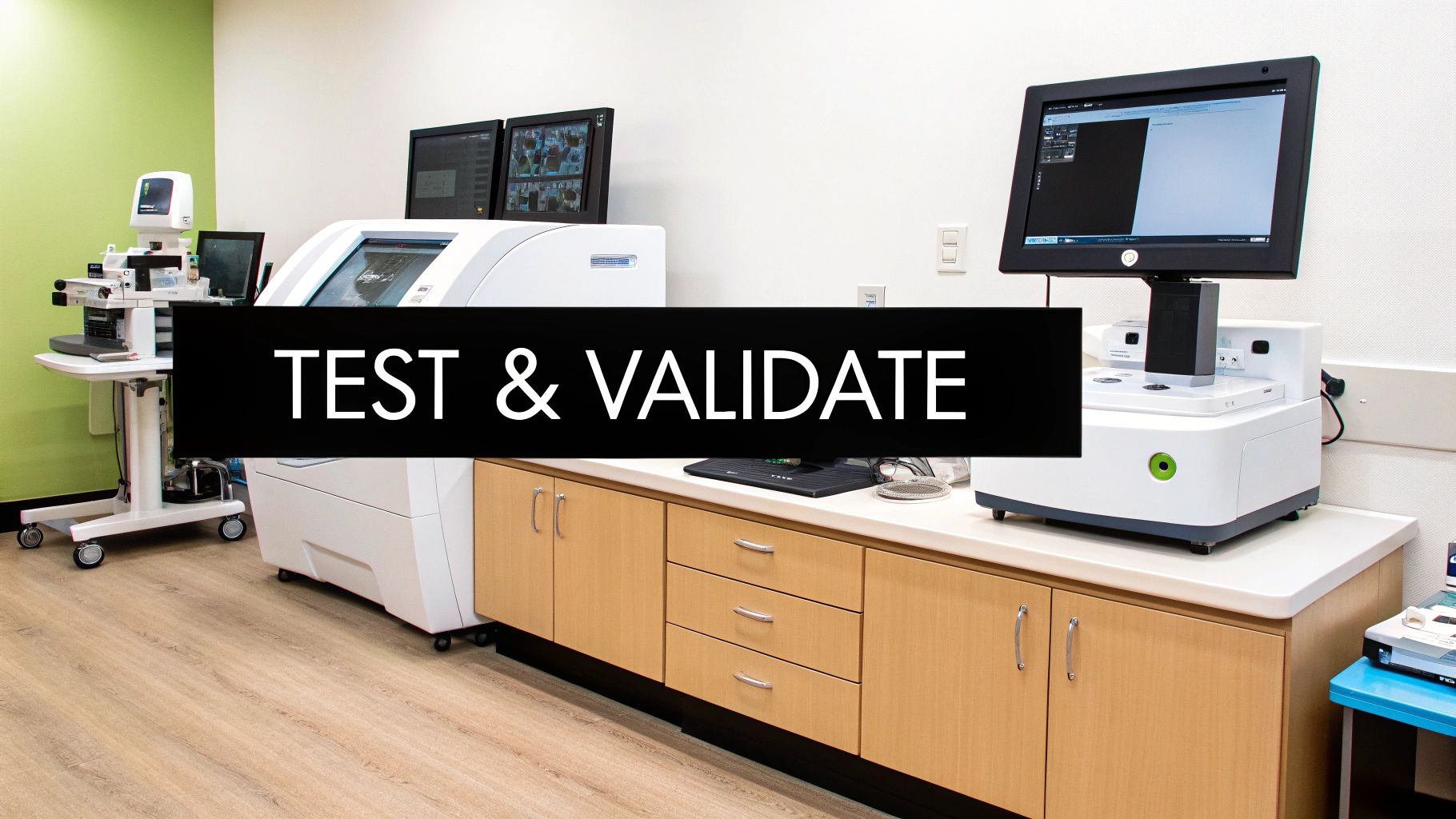
Medical devices must be more than functional. They need to be user-friendly, scalable in manufacturing, and compliant with strict regulations. This presents a complex challenge requiring a strategic approach to design controls and a dedication to innovation.
Integrating Design Controls With Innovation
Leading medical device companies recognize that design controls, as outlined in FDA 21 CFR 820.30, aren't obstacles to innovation. Instead, they provide a structured pathway to achieve it. These controls offer a systematic method for documenting design choices, verifying and validating device performance, and managing design modifications. This ultimately ensures devices are safe, effective, and meet user needs, all while promoting continuous improvement.
During the design phase, for example, companies identify user needs and establish design inputs. These are then translated into tangible design outputs, like device specifications and manufacturing processes. Each step is meticulously documented and reviewed, creating a clear record of design decisions. This traceability is essential for both regulatory compliance and efficient change management.
Effective Design Review Practices
Regular design reviews are fundamental to effective design controls. They act as checkpoints throughout the development process, offering opportunities to identify and resolve potential problems early on. These reviews should include a diverse team of engineers, clinicians, and regulatory specialists.
Furthermore, design reviews help balance competing priorities like usability and manufacturability. A device may need to be both easy for a surgeon to use and cost-effective to produce. The design review process enables discussions and trade-off analyses to achieve the optimal balance.
Managing Design Changes
Change is unavoidable in medical device development. Uncontrolled changes, however, can cause delays, cost overruns, and even regulatory issues. Effective change management requires a robust system for documenting proposed changes, assessing their impact, and securing necessary approvals.
Companies must have clear procedures for evaluating how a design change affects device performance, safety, and regulatory compliance. Version control for design documents is also essential, ensuring all stakeholders are informed of the latest revisions. This meticulous change management maintains project timelines and minimizes disruptions.
Design Verification and Validation
Verification and validation are crucial for guaranteeing a medical device fulfills its intended purpose and user needs. Design verification confirms the device meets predetermined specifications, while validation ensures it meets user needs in the real-world environment.
Verification might involve testing the device in simulated conditions or benchtop testing of individual components. Validation could include clinical trials or gathering user feedback on prototypes.
Cross-Disciplinary Collaboration
Creating successful medical devices necessitates close collaboration among engineers, clinicians, and other stakeholders. Clinicians offer valuable insights into user needs and clinical workflows, essential for developing devices that are both clinically effective and user-friendly. Engineers contribute their technical expertise to ensure devices meet performance standards and are manufacturable. This interdisciplinary partnership fuels innovation and ensures devices satisfy both clinical and technical requirements.
Design Transfer for Manufacturing Success
The final design stage involves transferring the design to manufacturing. A well-defined design transfer process guarantees the manufactured device consistently adheres to design specifications. This requires close collaboration between design and manufacturing teams.
Successful companies establish clear documentation and communication protocols for this transfer. They also implement robust quality control measures to ensure manufactured devices meet the required standards. This meticulous approach to design transfer facilitates a smooth transition from development to production, paving the way for commercial success.
Proving Your Device Works: Testing Strategies That Matter
Testing medical devices isn't just a box to check; it's fundamental to the entire development process. It provides crucial evidence of your device's safety and performance, instilling confidence in regulatory bodies like the FDA and the clinicians who will ultimately use it. Let's explore how to build testing strategies that satisfy these key stakeholders.
Identifying Critical Tests for Clinical Success
Effective testing strategies begin with identifying the tests that directly correlate with clinical success. These tests should zero in on the device's core functionality and address any potential risks. This requires a deep understanding of the clinical needs your device aims to solve and the performance criteria that demonstrate its effectiveness. For example, a new blood glucose monitor might undergo rigorous accuracy testing across a wide spectrum of glucose levels. This ensures reliable readings in diverse real-world scenarios.
Verification and Validation: Meeting Regulatory Standards
Robust verification and validation protocols are non-negotiable for regulatory compliance. Verification confirms your device meets pre-established specifications. Validation, on the other hand, demonstrates its intended use and performance in a clinical setting. Meticulous documentation and traceability for these processes are paramount.
Biocompatibility Testing: Ensuring Patient Safety
Biocompatibility assessment is critical for any medical device that interacts with the human body. These tests evaluate how the device interacts with biological systems, ensuring it won't trigger adverse reactions. Material selection and testing methodologies are central to this process.
Software Validation for Iterative Development
Software plays an increasingly vital role in modern medical devices, demanding a dedicated approach to validation. Software validation needs to be flexible enough to accommodate iterative development, allowing for continuous testing and improvement throughout the entire development lifecycle. Automated testing tools, such as Selenium, can significantly boost efficiency and maintain consistent results.
Designing Studies for Compelling Evidence
Well-designed studies are the bedrock of compelling evidence required for both regulatory approval and clinical adoption. This requires careful consideration of endpoints, appropriate sample sizes, and robust statistical analysis. Collaboration with clinical experts is invaluable to ensure studies accurately reflect real-world usage patterns.
Risk-Based Testing: Focusing Resources Effectively
Leading medical device companies utilize risk-based testing for efficient resource allocation. This approach concentrates on high-risk areas, ensuring that the most critical aspects receive thorough scrutiny. A Class III device, posing higher patient risk, would necessitate more stringent testing than a Class I device. This risk-based strategy optimizes testing efforts and minimizes costs without jeopardizing safety or efficacy.
Clinical Evidence: Making the Case for Your Medical Device
Clinical evidence is the foundation of medical device development. It provides the necessary proof that your device functions as designed, fulfills a genuine clinical need, and ultimately benefits patients. This evidence is essential for obtaining regulatory approvals, achieving successful market access, and ensuring widespread clinical adoption.
Designing Robust Clinical Programs
Developing a compelling clinical evidence package requires a well-structured clinical program. This program must balance scientific rigor with practical limitations. It involves careful planning, meticulous execution, and consistent oversight.
-
Defining Clinical Endpoints: Clearly defined endpoints are crucial. These measurable outcomes must be meaningful to both regulatory bodies and clinicians. For instance, a clinical trial for a new heart valve might use endpoints such as improved blood flow or a reduction in hospital readmissions. These tangible metrics showcase the device's effectiveness and clinical value.
-
Patient Recruitment and Enrollment: Efficient patient recruitment is vital for timely study completion. Recruitment strategies must balance speed with the quality of the data collected. This involves targeting the appropriate patient population and implementing streamlined enrollment processes. Effective communication with potential participants is essential for building trust and ensuring informed consent.
Managing Clinical Operations
Clinical trials often involve multiple sites, diverse teams, and large volumes of data. Managing these complexities requires careful organization and stringent quality control.
-
Multi-Site Coordination: Consistent protocols across all clinical trial sites are paramount for data integrity. This requires clear communication, standardized training, and ongoing monitoring. This ensures data consistency and reliability across all participating locations.
-
Data Management and Analysis: Clinical data must be collected, stored, and analyzed according to rigorous standards. This includes secure data storage, thorough quality checks, and the application of appropriate statistical analysis methods. The resulting insights form the foundation of the clinical evidence package.
Leveraging Real-World Evidence
Real-world evidence (RWE), derived from routine clinical practice, can supplement traditional clinical studies. This data offers invaluable insights into a device's long-term performance, safety, and effectiveness in real-world settings. This information is particularly useful for demonstrating the device's impact on patient outcomes and their overall quality of life.
Developing Clinical Evaluation Reports
The Clinical Evaluation Report (CER), a mandatory requirement under the EU MDR, summarizes all available clinical data and provides justification for the device's safety and performance. This comprehensive document is critical for securing regulatory approval within the European market. It demonstrates the device's adherence to the strict requirements of the EU MDR.
Building Evidence for Approval and Adoption
Ultimately, clinical evidence must support not only regulatory approval but also clinical adoption by healthcare professionals. A persuasive evidence package showcases the device's clinical benefits, cost-effectiveness, and overall value. This information resonates with healthcare providers, payers, and ultimately, the patients themselves. It provides the rationale for integrating the device into clinical practice and improving patient care. The medical device development process, including the generation of clinical evidence, is a complex but essential undertaking. By prioritizing scientific rigor, patient safety, and a user-centered design, medical device developers can create genuinely beneficial products that improve healthcare globally.
The Economic Reality: Managing Costs in Device Development
Developing a medical device isn't just about scientific breakthroughs and engineering ingenuity; it's a significant financial investment. This section explores the financial side of medical device development, offering insights into how companies strategically manage costs for sustainable innovation.
Estimating Development Costs
Accurate cost estimation is fundamental for securing funding and ensuring project viability. This involves projecting expenses for each phase, from initial concept to post-market surveillance. Consider personnel, materials, testing, regulatory fees, and a contingency buffer for unexpected issues.
Early prototyping might involve lower material costs but higher design iteration expenses. Clinical trials escalate costs due to patient recruitment, data collection, and analysis. Flexibility in budget forecasts is key.
Identifying Critical Investments
Not all spending is equal. Distinguishing between critical investments and "nice-to-haves" is crucial for efficient resource allocation.
-
Critical investments: These include essential personnel, specialized testing equipment, and core materials for prototypes. They directly contribute to the device's functionality, safety, and regulatory compliance.
-
Nice-to-have expenditures: These might be non-essential software upgrades or early-stage marketing. While potentially beneficial, they can be deferred to prioritize crucial activities.
Funding Strategies Aligned with Milestones
Successful development requires aligning funding with milestones, ensuring adequate capital at each stage to minimize financially driven delays.
-
Early-stage funding: Secured through seed funding, angel investors, or small business grants. This supports initial prototyping, concept validation, and preliminary testing.
-
Later-stage funding: Venture capital or strategic partnerships can provide larger sums needed for clinical trials and regulatory submissions.
Managing the Time-Cost-Quality Triangle
The time-cost-quality triangle describes the interconnectedness of project timeline, budget, and device quality. Changing one invariably impacts the others. For example, accelerating development often means increased spending or potential quality compromises. Effective project management involves balancing these competing priorities.
Strategies include prioritizing essential features for initial development, implementing rigorous quality control, and strategically phasing milestones to manage time and cost. The estimated cost of developing a complex therapeutic medical device in the United States reflects this challenge. A 2022 study estimated the mean direct development cost at about $54 million, while the total capitalized cost, including failed studies and capital, averages an estimated $522 million. Explore this topic further.
Preserving Capital During Regulatory Delays
Regulatory processes can be unpredictable, causing unexpected delays. Preserving capital during these times is vital for maintaining project momentum. Strategies include streamlining non-essential activities, exploring alternative funding, and maintaining open communication with regulatory bodies.
Building Economic Evidence for Market Access
Demonstrating a medical device's economic value is crucial for market access and reimbursement. This involves compiling evidence of cost-effectiveness, potential cost savings for healthcare systems, and improved patient outcomes. This evidence persuades payers and healthcare providers to adopt the device.
Developing a medical device means managing financial realities as diligently as the scientific and technical ones. A well-defined financial strategy is essential for sustainable innovation, enabling companies to navigate the development process from concept to commercialization.
Ready to integrate AI into your medical imaging solutions and optimize your development process? Contact PYCAD to learn about our AI services and how we can help bring your medical device to market. Learn more about AI at PYCAD

